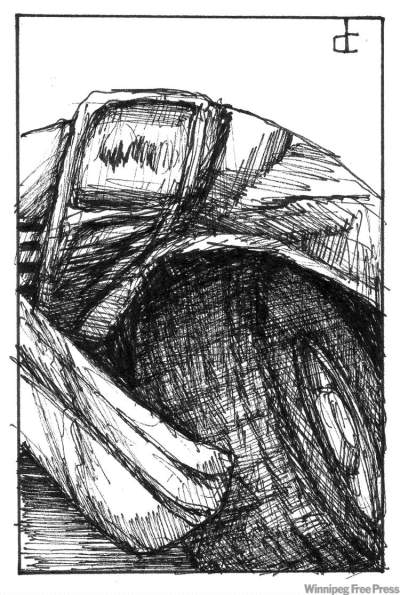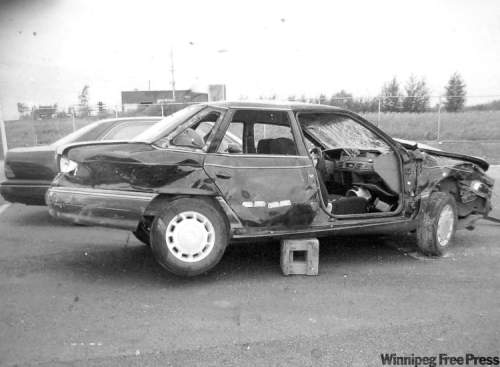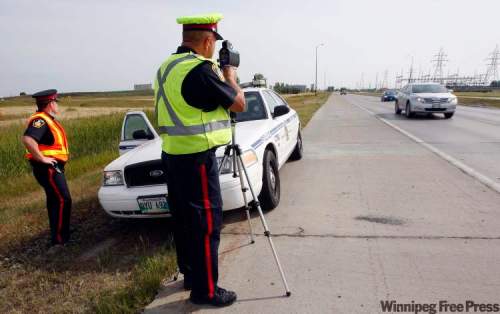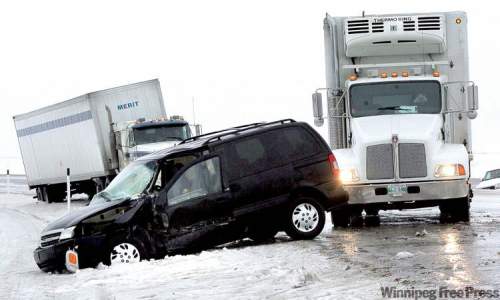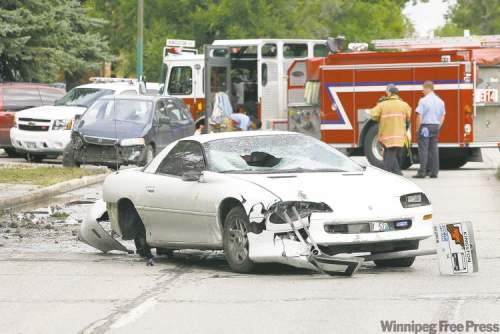Collision Course
Driving the future
9 minute read Friday, Aug. 19, 2011Forty-one years ago, Winnipeg metro councillor Bernie Wolfe warned cars would be on a “collision course” with cities unless governments of all levels sat down and negotiated a planned approach to urban transportation.
At the time, Winnipeg was debating whether or not to move ahead with recommendations from a 1968 study to build 30 kilometres of freeways and an 8.6-kilometre subway system.
Ultimately, the idea was scrapped, and the city grew to rely on major routes and traffic signals to keep vehicles flowing.
Winnipeg has been without a long-term transportation plan ever since. Today, the city faces a similar dilemma: How will it upgrade its existing roadways and move people from point A to point B?
Advertisement
Weather
Winnipeg MB
-14°C, Cloudy with wind
Reducing fender benders
2 minute read Preview Thursday, Aug. 18, 2011Crash injuries shatter lives
6 minute read Preview Thursday, Aug. 18, 2011Mayor hopes to reduce speeds in school zones
2 minute read Wednesday, Aug. 17, 2011Winnipeg could soon reduce the speed limit in school zones.
While the city is one of the few in Canada that does not have reduced speed limits around schools, Mayor Sam Katz said he would like to see that change. Katz met with public works and the Winnipeg Police Service on Tuesday to discuss the issue.
City staff will research how limits could be lowered to 30 kilometres per hour around some city schools, Katz said. In parts of Winnipeg, schools are on high-traffic streets, while others are in residential areas, Katz said. City staff will determine how a reduced-speed policy could work and will report back to him in the coming weeks.
Katz said he plans to formally introduce a motion to council before the end of fall.
Fast fix
7 minute read Preview Wednesday, Aug. 17, 2011INTERACTIVE MAP: A bad day on Winnipeg streets
1 minute read Preview Tuesday, Aug. 16, 2011Slippery streets take huge toll
6 minute read Preview Tuesday, Aug. 16, 2011Walking, cycling can be deadly
7 minute read Preview Monday, Aug. 15, 2011Our daily demolition derby
7 minute read Preview Saturday, Aug. 13, 2011INTERACTIVE MAP: Winnipeg’s top collision locations, 2005 – 2009
1 minute read Preview Saturday, Aug. 13, 2011INTERACTIVE MAP: Winnipeg road fatalities, 2007 – 2011
1 minute read Preview Friday, Aug. 12, 2011LOAD MORE



